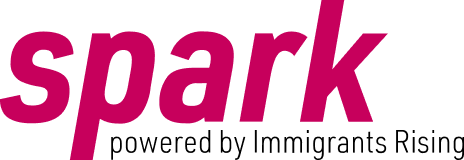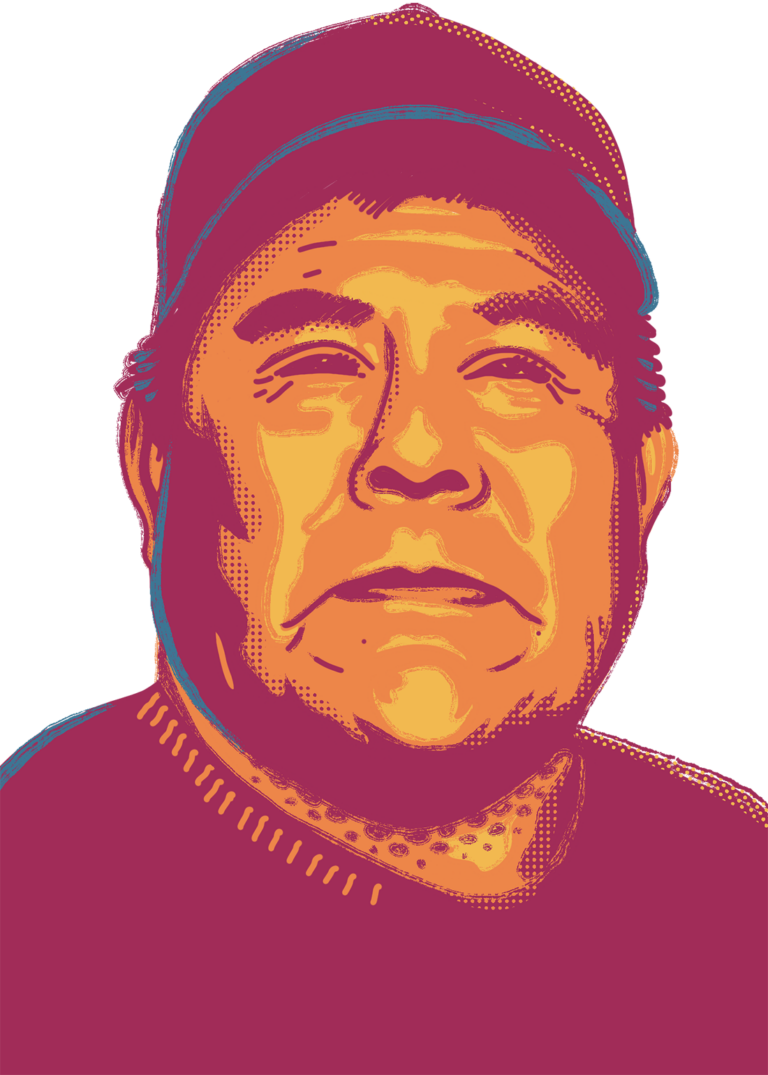You know that credit is important, but how do you build it and how do you use it to access capital?
Loading...
Introduction to Financing
In this module you will learn how to create a budget, manage your credit, the different types of financing available, and how you can prepare to receive a loan. Regardless of immigration status, you can build credit and access capital. Keep reading to learn the basics of financing.
Contents
End of Section
Setting Your Goals and Creating a Budget
Setting your financial goals
As you create a budget, consider including both your personal and business goals.
Do you want to purchase a food truck? Open a restaurant? Or quit your job?
Having clear goals and understanding the financial needs associated with them can help you organize your next steps. So, think about your financial goals. What is something you want to accomplish in the short-term (within a year)? What about in the next 3 years? years) And what long-term goals do you have (5+ years)? Once you have listed these goals, consider how much money you will need to accomplish each of them.
Creating a budget
In this section we will consider two types of business expenses: one-time and recurring.
One-time expenses are the initial costs to launch your business, such as buying equipment, paying for permits, or building a website. Recurring expenses are things you have to pay monthly such as supplies, utility bills, rent, and employee salaries.
To create a business budget consider the following:
- What are your one-time expenses? Consider things such as: a down payment for a new storefront, a food truck, or equipment purchases.
- What are your monthly expenses? Consider things such as: Rent, utilities, and employee salaries.
- How much money are you ready to invest? How much will you need to finance?
Consider creating a personal budget to help you manage your finances. This is especially important if your new business will be your main source of income.
Contents
End of Section
What is Credit?
Even if you do not have a SSN, an Individual Tax Identification Number (ITIN) allows you to build credit, open a bank account, and file your taxes. Gaining credit without immigration status can be extremely difficult and confusing. However, there are ways to build good credit and to receive financing without a SSN. The following sections are aimed to help you understand how credit works, as well as actions you can take to build good credit and start accessing capital.
Contents
What is credit?
What is credit?
So, you have a great idea for a new business or you want to start working for yourself. What things do you need to start selling your products and/or services? Maybe you want to lease an office space, purchase a phone plan, or obtain a new computer. You may not have cash to purchase these things upfront but you need them to begin earning money. This is where credit becomes important.
Essentially, credit represents your willingness and ability to repay debt and allows you to borrow money. It’s a powerful tool that helps you get the things you want now based on your promise to pay later. Having good credit is important when you need to qualify for a loan or finance a large purchase.
End of Section
Credit Score
Contents
Where your credit score comes from
Building good credit
Taxpayer Identification
Where your credit score comes from
In the US, there are three bureaus that track and rate your credit trustworthiness: Equifax, Experian, and Transunion. Together, these three organizations create a record of how well you have repaid debt in the past and send this information to two primary credit scoring companies: the Fair Isaac Corporation (FICO) and VantageScore. Both companies use this information to assign you a credit score ranging from 300 to 850.
General credit score ratings:
- Fair 580-669
- Good 670-739
- Excellent 740-850
The closer your score is to 850 the better, allowing you to access better financial products with lower interest rates, which means you won’t have to pay as much money back to the lender. You can get your free credit score on websites like VantageScore, mint.com, and creditkarma.com. These websites are not the authority and can only provide you with a good sense of where your credit score stands. Use these credit scores only as a guideline.
Building good credit
You are probably wondering what determines your FICO credit score and how you can maintain a good score. FICO doesn’t disclose their credit score formula but they do tell us the factors and guidelines used, as well as what goes into each guideline category.
Payment History (makes up 35% of your total score)
This is the most important factor in determining your credit score. In order to ensure a high credit score, you must make bill payments on time. The Payment History factor refers to how often you have made debt payments on time in the past. In order to ensure a high credit score, you must make bill payments on time. Late payments will continue to reflect in your credit score for up to seven years. Consider setting up your payments to be automatic as one way to reduce the risk of late payments. Or, if necessary, call customer service to try and extend your payment schedule and avoid late fees.
Amounts Owed (makes up 30% of your total score)
The amount you owe represents the total amount of unpaid debt. Having a large amount of unpaid debt is a concern for lenders. An additional factor in this category is the percentage of money spent in a given line of credit. Try to keep the amount you owe on lines of credit such as credit cards to 30% of the credit limit or less. For example, if your credit card limit is $100, try not to carry a balance (owe) over $30.
Length of Credit History (makes up 15% of your total score)
The sooner you begin to establish a credit history, the better. Lenders like to see you can manage debts over a longer period of time.
New Credit (makes up 10% of your total score)
It’s really important to be selective about your credit applications. For example, if you opened a retail store credit card you or your family signed up for to get a discount on your purchase, that probably cost you a few points on your FICO score. Opening up many lines of credit raises concerns from the credit bureaus about why you need so much credit from a financial standpoint. Limit the times you apply for new credit to one or two times a year at most.
Types of Credit Used (makes up 10% of your total score)
Lenders want to see that you can manage and budget for different types of credit. You can do this by opening different types of credit such as a credit card (revolving credit), a car loan (installment loan), and utility bills (open account). Again, remember to only open one or two new credit accounts per year.
Taxpayer Identification
The three credit bureaus, banks, and other lending institutions need a way to identify people and track their credit information across all systems. Lenders will use your SSN or ITIN to report payments, balances, and other credit details. Business lenders can use an EIN, or Employer Identification Number to report on business credit.
End of Section
How to Establish or Strengthen Credit
Now that you know what credit is all about you might ask: what if I don’t have credit yet but I still want to start a business and need to borrow money? The first thing you should do if you are not eligible for an SSN is apply for an ITIN. Learn more about the ITIN in the TAXES module.
The ITIN number allows you to open bank accounts, establish credit, and file a U.S. tax return. The ITIN number does not authorize you for work in the U.Ss or make you eligible for Social Security benefits, but it is worth the effort to take charge of your credit profile, as good credit will give you more freedom and flexibility in the long run. Make sure all of your good borrowing activity gets reported to the credit bureaus and reported in your credit report by using your SSN or ITIN.
Avoid payday loan companies and other high-interest, high-fee loans (often called predatory lenders). Instead, use reputable banks and credit card companies. You can look on the FDIC (Federal Deposit Insurance Corporation) website for more information on trusted banks and credit card companies. The FDIC’s logo is also a symbol of governmental approval, and you will likely see it at a reputable bank or credit card company. If you are just starting out with your credit, there are two great products you can access to start building your credit history: lending circles and secured credit cards.
Contents
Lending Circles
Lending Circles
A lending circle is a zero interest social loan. It works by bringing a community of borrowers together to formalize their lending and to borrow with one another. This is a safe way to access money because it requires approval to participate, uses participants’ checking account funds, reports to the three credit bureaus, and is backed by a reliable organization that insures your money. These are small loans and are intended to be your first step in building credit. Most participants exit the program with a credit score of around 600. You can access this program through the Mission Asset Fund website.
Check with your local bank to see if they provide a secured credit card option. This service allows you to use your own money as a line of credit. You make purchases with your secured credit card and make payments like any other type of credit card, including interest. The bank will report your payment history to the credit bureaus, and after a year of successful payments they will return your cash and transition your card into a regular credit card.
End of Section
Accessing your Credit Report
Contents
What is a credit report?
Accessing your credit report
What is a credit report?
Your credit report shows your credit history– your open and closed accounts, account balances, collections, and other payment history. Lenders and creditors will report your monthly payment activity to the three credit bureaus. Your FICO score is a reflection of your credit report.
Accessing your credit report
It’s important to look at your credit report a few times per year to see how it has changed. You don’t want to wait until you are applying for a loan to find out how your credit appears to a lender. All three credit bureaus (Equifax, Experian, and Transunion) can provide you a free credit report once a year without it affecting your FICO score. If you have a Social Security number, you can get your report using one of these options:
- AnnualCreditReport.com
- Mail in a paper request form
- Call the Federal Trade Commission (FTC) 1-877-322-8228
If you don’t have a Social Security number, you may need to mail in the paper request form (see above link to access the form) using your ITIN.
Once you have your report, be sure to check that your personal information is accurate. If you find errors, call one of the credit rating agencies (Equifax, Experian, and Transunion) to dispute specific information on the report. The report will give you detailed information about your credit history so you can see it all in one place.
End of Section
Accessing Credit: Small Business Capital
You may be wondering why your personal credit history matters if you’re looking to borrow as a business rather than for something personal. Often lenders will want to look at your personal credit history because business loans are typically personally guaranteed, which means you will personally be responsible for the loan if your business can’t pay it anymore.
Fortunately, there are a couple of well known organizations that aim to help small businesses access capital.
Contents
Traditional lending - The SBA
Alternative Lending
Traditional lending - The SBA
One of the most well known and trusted business lenders is the Small Business Administration (SBA). This is a nationwide organization that is well connected with many helpful local resources and services. If you do not have a social security number, alternative lending may be a better option for you.
Alternative Lending
There are some lending options that do not require a SSN. These include financial products from local banks, Community Development Financial Institutions (CDFIs), and CAMEO, a network of non-profit community lenders in California. A chart with more details about different funding options is included below. As your business grows, you will be able to build business credit the same way you build personal credit.
| Traditional lending | Alternative lending | Investors | Community Grants | Crowdfunding | Friends and Family | |
| Type | SBA & Bank loans | CDFl & Non-profit lending | Private investors | Immigrants Rising Entrepreneurship Fund | KIVA, Kickstarters, Indiegogo, Cashmob | Personal loans |
| Amount | $5k-5M | $5k-500k | $1k-5M | $500-$10k | $1k-500k | $2k-50k |
| Interest rates | Low (2-10%) | Low-Med (5-15%) | N/A | N/A (grant) | Low (0%-5%) | N/A |
| Business stage | 2+ yrs of | Start-ups ok | Start-ups ok | Start-ups ok | Start-ups ok | Start-ups ok |
| Immigrantion status | Residency Required | ITIN ok (sometimes) | Depends | ITIN ok | ITIN ok (typically) | N/A |
| Benefits & Disadvantages | Low interest, but harder to obtain | Business support can be strict | Flexibility, need to ensure high return on investment | “Free” money, but low amount | Low interest, but requires work to raise $ | Fast turn-around, need to ensure returns to pay $ |
There are also a number of helpful resources available through federal and non-profit agencies (see resources section).
End of Section
What Lenders Look For
Let’s imagine you want to go to a lender to borrow money so you can grow your business. Your credit score is a key factor in how lenders will assess your eligibility for a loan, but it’s not the only one. Before you approach a lender, we recommend you get familiar with the 5 Cs: credit, conditions, collateral, capital, and what lenders refer to as your character. Lenders consider these 5 primary factors when determining whether to grant you a loan:
- Credit: How likely are you to make payments on time and pay off the loan?
- Conditions: Do you have experience in your industry? Are you ready to start this kind of business?
- Collateral: Do you have assets that you can turn into cash quickly to pay back your loan? You might be asked to provide something of value such as equipment or inventory to back your loan.
- Capital: What is your income and available cash? What are your income sources? How much can you afford to pay monthly (capacity)?
- Character: How responsible have you been with your past debts? Do you have any late payments or collections? This is typically determined by referring to your credit report
Contents
End of Section
What Borrowers Should Look For
It might seem like lenders hold all the power, but the decision making power is in your hands as well. Watch out for predatory lenders who offer “easy” loans with unreasonably high interest rates or unrealistic pay back periods. Pay close attention to fees and interest rates when you go to apply for a loan. Make sure you prepare and search for different options to find the best interest rate/loan for you.
It’s a good sign if a lender is asking you a lot of questions because it means they want to make sure you are making a financially responsible decision.
As a responsible borrower, you should be looking for four pieces of information from your potential lenders:
- Terms & Conditions: terms include the interest rate, monthly payment requirements, associated penalties (such as prepayment penalties), or special repayment provisions.
- Interest Rate: pay attention to the interest rate and whether it is fixed or variable.
- Fees: there may be application fees, closing fees, late fees, or other administrative fees.
- Client Services: make sure your lender is someone you want to work with long-term and that they treat you with respect.
Contents
End of Section
Helpful Resources
Contents
Credit Resources
Accessing Capital & Lending Organizations
Credit Resources
- Accessing Your Credit Report
- AnnualCreditReport.com
- Call 1-877-322-8228
Applying for ITIN
Credit Education
Receive financial coaching
Disputing Credit Errors
Business Credit
Accessing Capital & Lending Organizations
As a certified Community Development Financial Institution (CDFI) by US Treasury, NALCAB lends to non-profit organizations that promote economic mobility in Latino communities by building affordable housing, investing in small businesses and strengthening family financial capability.
Provides crowd funded 0% interest loans.
While the CDFI Fund does not make loans directly to individuals—nor does it directly finance specific projects—the CDFI Fund does provide financing to CDFIs throughout the country that, in turn, provide financing to individuals and small businesses.
This guide provides basic information about building credit and how to access financial capital for yourself and your business, regardless of immigration status.




















